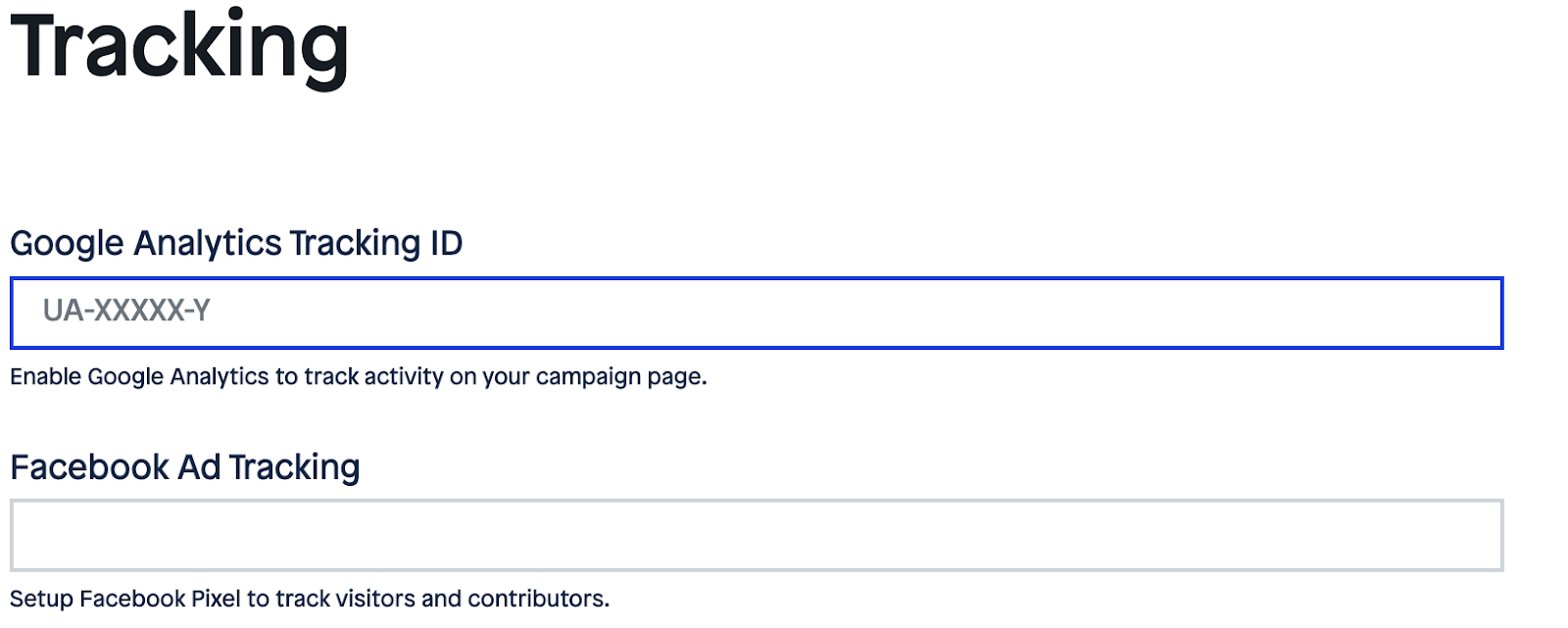Hey, early-stage entrepreneurs!
Crowdfunding should be the first stop on your journey. When you decide to crowdfund, you will raise debt-free cash for your business idea without going into debt. The best part? Crowdfunding allows you to tap into your network of friends, co-workers, and all the people who want to support you.
But, how will you know who exactly is supporting you, and how they found you?

A question that comes up a lot in crowdfunding is "what is a crowdfunding marketing strategy?" How can you track who is actually looking at your campaigns, what platforms they used to find the campaign, and how should you use that information to get more funders and reach your crowdfunding goal?
We got you covered.
Through platforms like IFundWomen, you can implement Google Analytics and Facebook tracking IDs. These tracking IDs help you to determine performance and track activity on your campaign page.
Meet Google Analytics (GA):
GA should be your best friend through your whole crowdfunding campaign lifecycle. GA is an analytics dashboard that allows you to view metrics such as audience behavior, traffic sources (where funders found your campaign), performance, and much more. You can determine which goals you’re trying to measure and then track that to understand how you can get more people to your crowdfunding campaign. You with me?
In order to use Google Analytics, you will first need to set up a free account (if you don’t already have one). Once you’ve done that, go into the platform and find your tracking ID. This can be found under Admin > Account > Property > Tracking Info. If you’re working with a Google Analytics 4 account, you have a measurement ID instead which has the format G-XXXXXXX.
Once you’ve gotten your tracking ID, head over to your crowdfunding platform of choice and paste that ID into the tracking ID section (see below!).

From there, you can view how many people have funded you, what those people look like in terms of audience demographic, and how they interact with your page, all through your GA dashboard.

Go Deeper
Next, let’s get a little more granular. After you’ve created your account and implemented your tracking ID, you should be thinking about how you’re going to incorporate this into your crowdfunding campaign marketing.
Let’s say you are simultaneously sending out an email blast to your friends and family—and a social media push—about your newly created amazing crowdfunding campaign. Now, how are you going to know which piece of marketing was more effective, or which funders came from that email vs. who came from your socials? [Spoiler alert:] Custom URLs!
Custom UTM URLs are links that help you identify which one of your channels is bringing in the most funders and gives you audience insights about them. Here’s a three-step reference on how to set up your custom UTM URL:
- Go to Google’s Campaign URL Builder
- Enter the tracking information (you can find examples on the page)
- Generate campaign URL
With this custom URL, you can use separate URLs for separate sources (one for that email blast and the other for your socials) and track all that information and data in Google Analytics! Once these insights start populating in your GA dashboard, use them to gauge where most of your audience is coming from, tweak where and how you’re talking about your campaign, and how you can get more funders to visit and support your campaign!
Think of your crowdfunding supporters as your business’ early adopters. A well-thought-out strategy will not only help you reach your funding goal, but also will help you understand these early fans, which will pay dividends for years to come.
Want to learn more?
Crowdfunders who lean into IFundWomen’s expert business coaching program are proven to raise 27X the crowdfunding industry average. Our coaches are standing by to school you on all things marketing that will help you Raise. More. Money. Learn more here.
THIS ARTICLE ORIGINALLY APPEARED ON IFUNDWOMEN, WRITTEN BY MANALI HANAMSAGAR. IT IS REPUBLISHED WITH PERMISSION.

